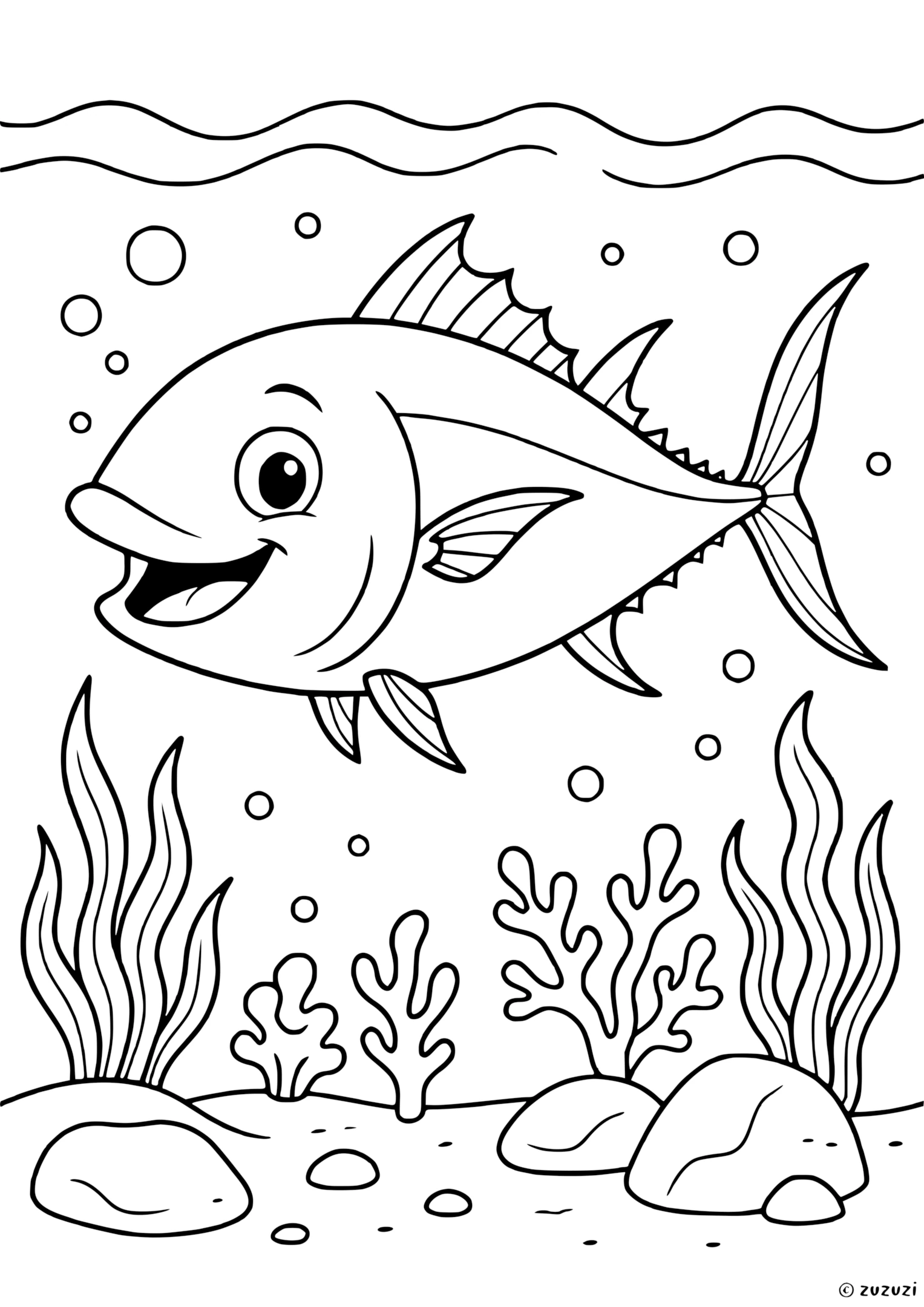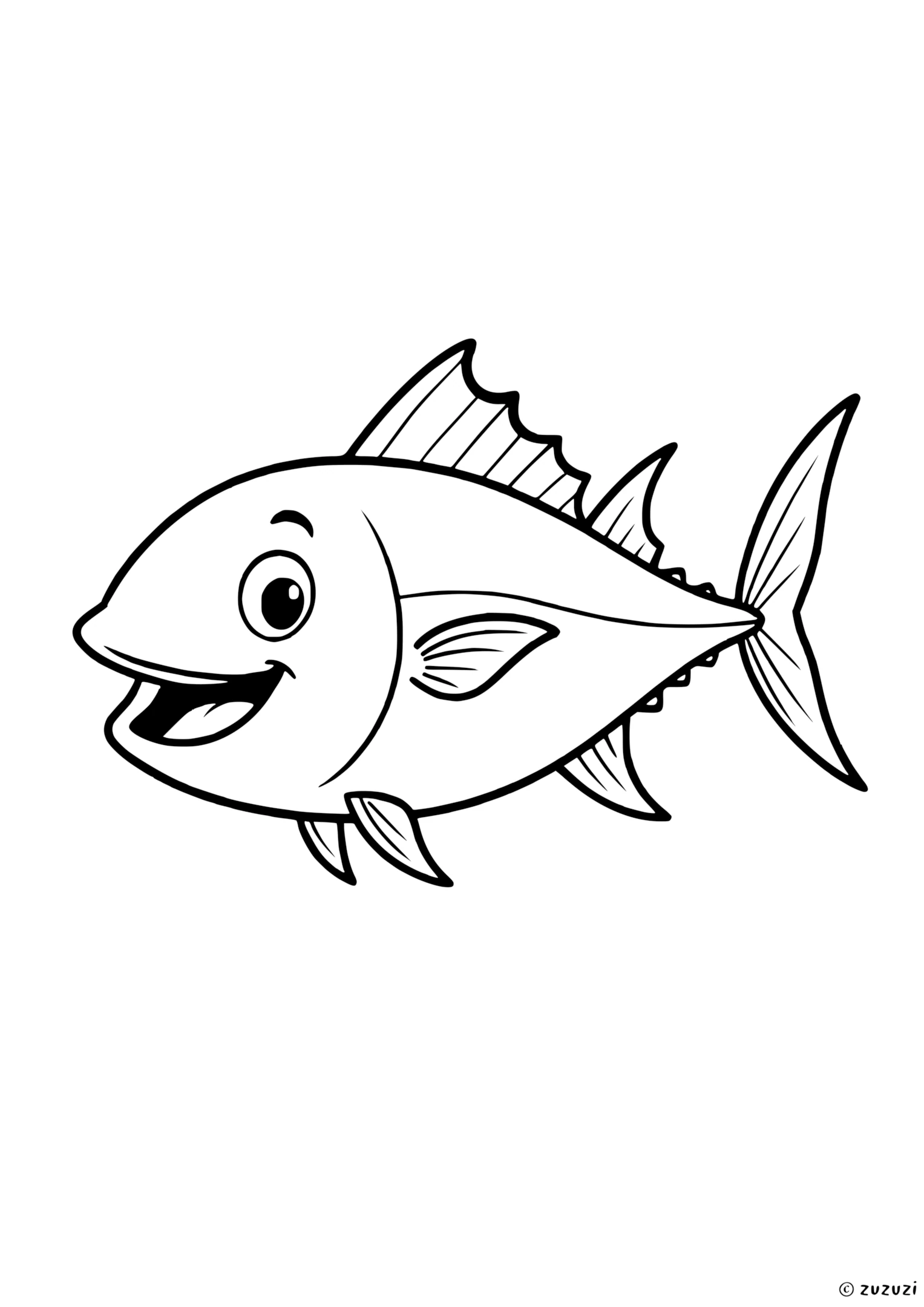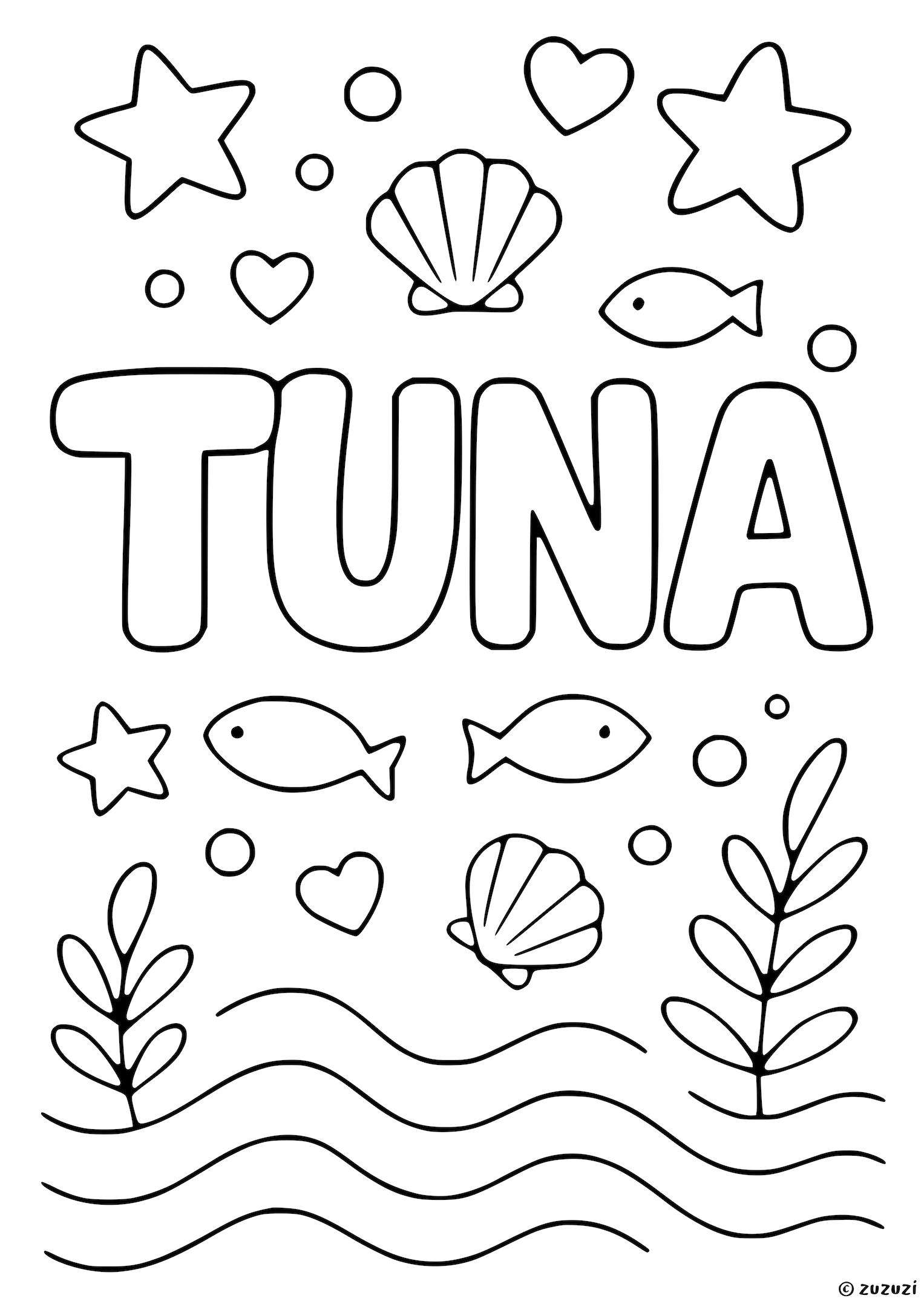Coloring ideas for Tuna
Tuna are known for their shiny blue backs and silvery bellies, so try using deep blue or navy for the top and light grey or silver for the bottom. Their fins can be a dark shade like black or even yellowish depending on the species. Add bright blues, purples, and greens to the background to create a lively underwater world with coral, seaweed, and bubbles. You can even throw in some ocean friends like jellyfish or other fish for extra fun.
On the back of the page, why not try writing some fun facts about the Tuna, or its name in different languages? You could even give it a name of your own, or draw your own version using your imagination!
What is a Tuna?
Tuna are large, fast-swimming fish that live in warm seas around the world. They can grow to be very big. Some species reach over 2 meters long and weigh more than 300 kilograms. Tuna have streamlined bodies built for speed, allowing them to travel long distances in the ocean. They are powerful swimmers and can even leap out of the water. Tuna eat other fish, squid, and crustaceans, and they often hunt in groups. Their skin is smooth and firm, and they are known for their endurance and strength. Tuna play an important role in the ocean’s food chain and are also important to many people around the world for food and fishing.
How to say Tuna in different languages?
- English: Tuna
- French: Thon
- Spanish: Atún
- Arabic: تونة
- German: Thunfisch
- Chinese: 金枪鱼
- Japanese: マグロ
- Korean: 참치
- Portuguese: Atum
- Italian: Tonno
- Hindi: ट्यूना
- Russian: Тунец
- Turkish: Ton balığı


